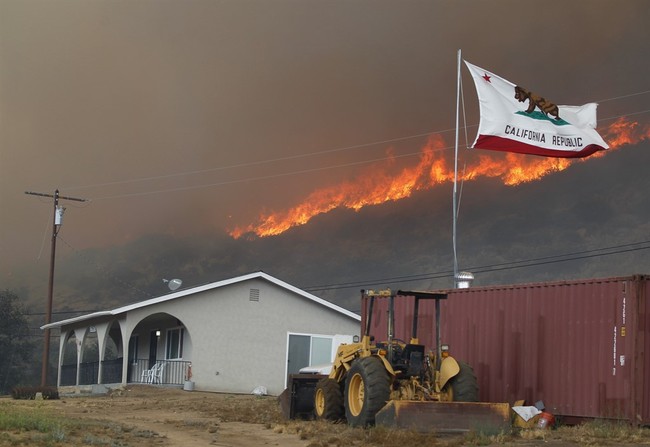
In the midst of a brutal fire season, California is faced with the double whammy of private insurers leaving the state while the state’s own insurance program is dreadfully short on funds to pay claims.
MORE: Don’t Buy Into the Hysteria – Here’s What Really Caused the Park Fire
To properly frame this story about California’s property insurance woes, a bit of background. In a previous life, I worked for a California-based insurance provider. While I was on the IT side of things, later moving to marketing (now there’s a story, albeit for another time), I learned some insurance business fundamentals. One is that a private insurance provider is required to have sufficient reserves, along with reinsurance if need be, to where if one morning every single policyholder filed a claim for the maximum amount of their policy, and the company paid every claim in full that afternoon, the provider would still have enough money left to open for business the following day. Granted, it’d doubtless be quite the bare-bones outfit, but it’d still be there.
This lesson is one unlearned by the state of California, as evidenced by how the state’s publicly owned but privately run FAIR Plan is presently so underfunded that should disaster strike, which in California is a matter of when and where as opposed to if, the plan would be utterly incapable of paying claims.
As its growth has exploded — from September 2019 to June 2024, the number of residential policies covered by the FAIR Plan soared from about 155,000 to nearly 409,000 — so has its liability. The plan had an exposure of $393 billion as of June, up from about $113 billion in September 2019, according to the insurer’s data.
But, as of June 30, the FAIR Plan had only about $385 million in surplus available to pay claims, President Victoria Roach told the editorial board in an exclusive interview.
So, should the unthinkable yet highly probable happen, how would claims be paid?
Private insurers are on the hook for any claims the FAIR Plan can’t pay in proportion to their share of their market.
Good plan, gang. Especially with private insurers leaving the state in droves.
Since California is firmly in the grasp of a political mindset unshakable in its belief that the populace in general, and business in particular, have no reason for existing save sitting on a mysterious and mythical yet still factual and inexhaustible supply of money to be spent by government entities on social engineering projects, naturally, it has little concerns about underfunding. In fact, the state wants to expand the FAIR Plan.
(California State Insurance Commissioner Ricardo) Lara announced the FAIR Plan had agreed to raise its commercial coverage limits to $20 million per building, with a cap of $100 million per property. The long-promised agreement seeks to address scenarios where large multi-building developments — such as housing complexes — are unable to get the full coverage they need under the FAIR Plan’s previous commercial cap of $20 million per property.
Hey, let’s encourage building high-density housing units in high-risk fire areas! BRILLIANT!
Examples of bureaucratic bumbling such as this are prime examples of why so many good-hearted and level-headed people are lining moving companies’ bank accounts as they head out of the once-Golden State. There are few, if any, efforts to mitigate fire danger by proper natural resource management.
For example, offshore desalination plants could easily address the state’s spotty water resources that are at present almost entirely dependent on the weather. It is a plan so logical and practical that even California Governor Gavin Newsom supports the effort. Unfortunately, thus far, plans for such have invariably been scuttled by “environmentalists” apparently deathly afraid that building facilities designed to assist in such superfluous activities as growing food and putting out forest fires could lead to a scenario in which today’s Beach Boys and girls might make a wrong move toward the seawater intakes, with the tragic result of their being turned into Soylent Surfer snacks for any local sharks not playing ice hockey in San José. It is little wonder why conservatives are calling it a day here. Still, some of us press on, no matter how dedicated Sacramento is to changing the state song from “California Here I Come” to this.